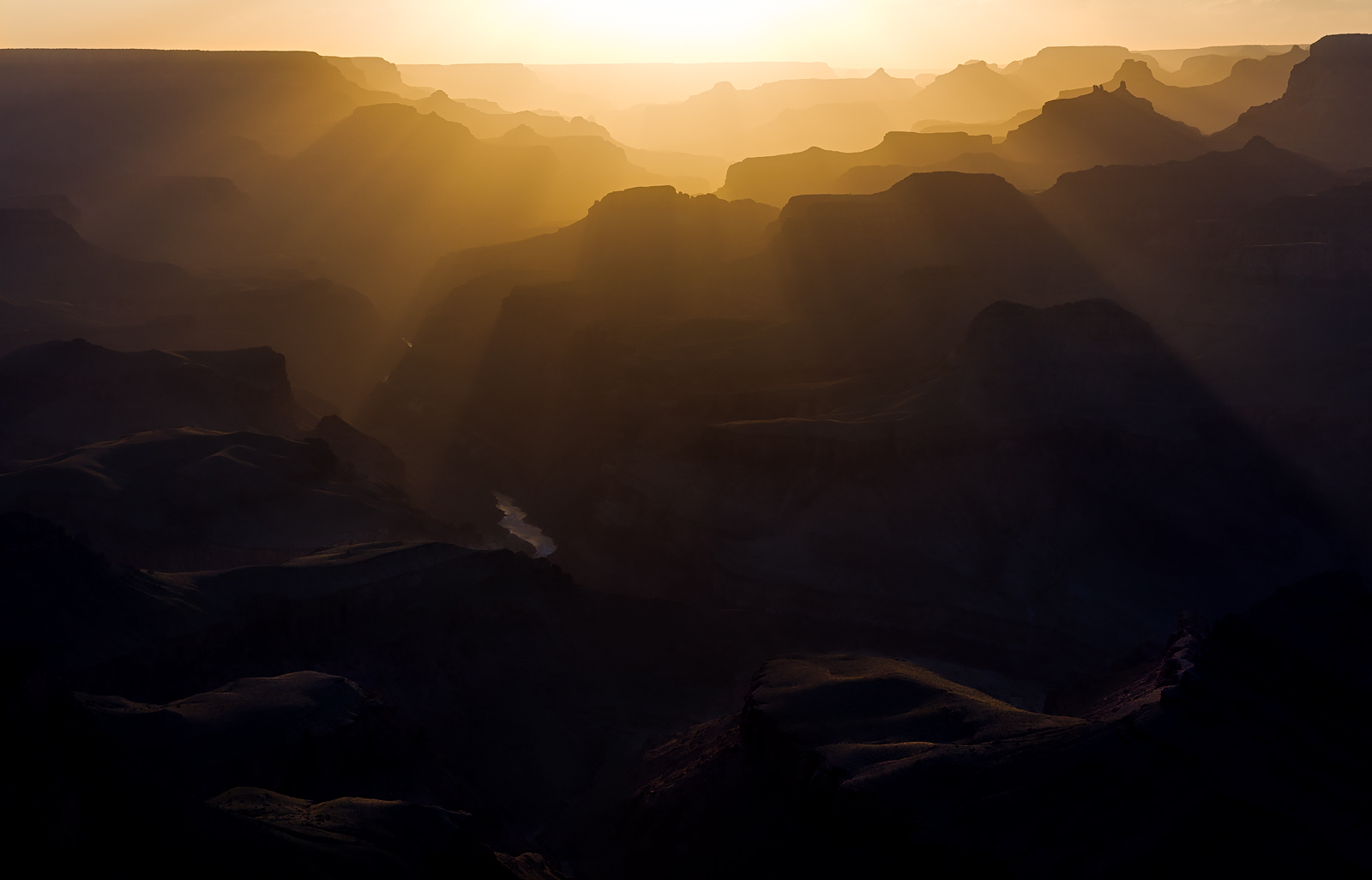At Lipan Point.
Taken handheld while juggling my duties as a chauffeur for my visiting nephew & nieces.
Although the backlighting obscures the details, it is worth noting that at the base of the canyon, near the section of the Colorado River seen in the frame, is the Vishnu Schist. How these rocks got their names is described here.
“Each of the rock layers that you mention derived their name from nearby canyon buttes and mesas. Specifically the Vishnu Schist was named by geologist Charles Walcott in the 1880s after Vishnu Temple, a prominent rock formation on the north side of the canyon near Cape Royale. The Brahma Schist was named by geologists Campbell and Maxson in the 1930s after Brahma Temple, a butte overlooking Bright Angel Canyon. I am not sure who named the Rama Schist (probably Campbell and Maxson), but it probably derived its name from Rama Temple, a rock spire near Vishnu Temple. All of these landmarks can be seen from the major overlooks on the South Rim.
The logical next question is how did these mesas and buttes get their names in the first place? Many of the canyon’s landmarks were named by geologist [Clarence] Dutton who published one of the earliest (and best) detailed geologic studies of the canyon in 1882. Dutton believed that the canyon was such an important and impressive feature on the planet, that the names of its features should reflect all the world’s cultures and thus he chose many names from mythologies and legends from around the world.”

“Let there be light”
5DS, 24-70L f/2.8 II





Breathtaking!The layering of the light and the richness of the brown-red hues are out of this world. Nicely done Rajan.
Thank you, Bob.
A masterpiece.
Takk, vinur minn.